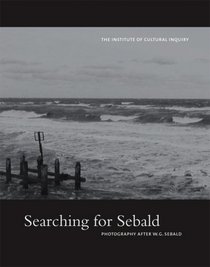Search -
Searching for Sebald
Searching for Sebald
Author:
W.G. Sebald's books are sui generis hybrids of fiction, travelogue, autobiography and historical expos , in which a narrator (both Sebald and not Sebald) comments on the quick blossoming of natural wonders and the long deaths that come of human atrocities. All his narratives are punctuated with images--murky photographs, architectural plans, eng... more »
Author:
W.G. Sebald's books are sui generis hybrids of fiction, travelogue, autobiography and historical expos , in which a narrator (both Sebald and not Sebald) comments on the quick blossoming of natural wonders and the long deaths that come of human atrocities. All his narratives are punctuated with images--murky photographs, architectural plans, eng... more »
ISBN-13: 9781889917115
ISBN-10: 1889917117
Publication Date: 7/1/2007
Pages: 600
Rating: ?
ISBN-10: 1889917117
Publication Date: 7/1/2007
Pages: 600
Rating: ?
0 stars, based on 0 rating
Publisher: Institute of Cultural Inquiry
Book Type: Paperback
Members Wishing: 0
Reviews: Amazon | Write a Review
Book Type: Paperback
Members Wishing: 0
Reviews: Amazon | Write a Review
Genres:
- Arts & Photography >> Photography & Video >> Criticism & Essays
- Arts & Photography >> Photography & Video >> Equipment, Techniques & Reference
- Literature & Fiction >> World Literature




